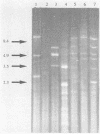Abstract
DNA typing techniques were used to examine selected clinical and environmental isolates of Sporothorix spp. recovered from the 1988 sporotrichosis epidemic in multiple states of the United States. Previous studies indicated that isolates in one of the six morphologically or physiologically distinct groups (group I) obtained from environmental sources were Sporothrix schenckii and were the possible etiologic agents responsible for the epidemic. To assess this hypothesis at the genetic level, whole-cell DNA was extracted from selected clinical isolates and representative members of each of the six environmental groups subjected to endonuclease digestion and then analyzed by gel electrophresis. DNA types were assigned on the basis of restriction fragment length polymorphism patterns. One DNA type was common to clinical and group I isolates but was dissimilar from the DNA types exhibited by groups II to VI. In contrast, a variety of DNA types were associated with isolates in groups II to VI. The latter groups appeared to make up a heterogeneous collection of fungi, with some members of the same group having different DNA types but with others from different groups possessing identical DNA types. Thus, DNA typing studies confirmed that group I environmental isolates are indistinguishable from clinical isolates and that group II to VI isolates represent a complex of related fungi with similar Sporothrix anamorphs.
Full text
PDF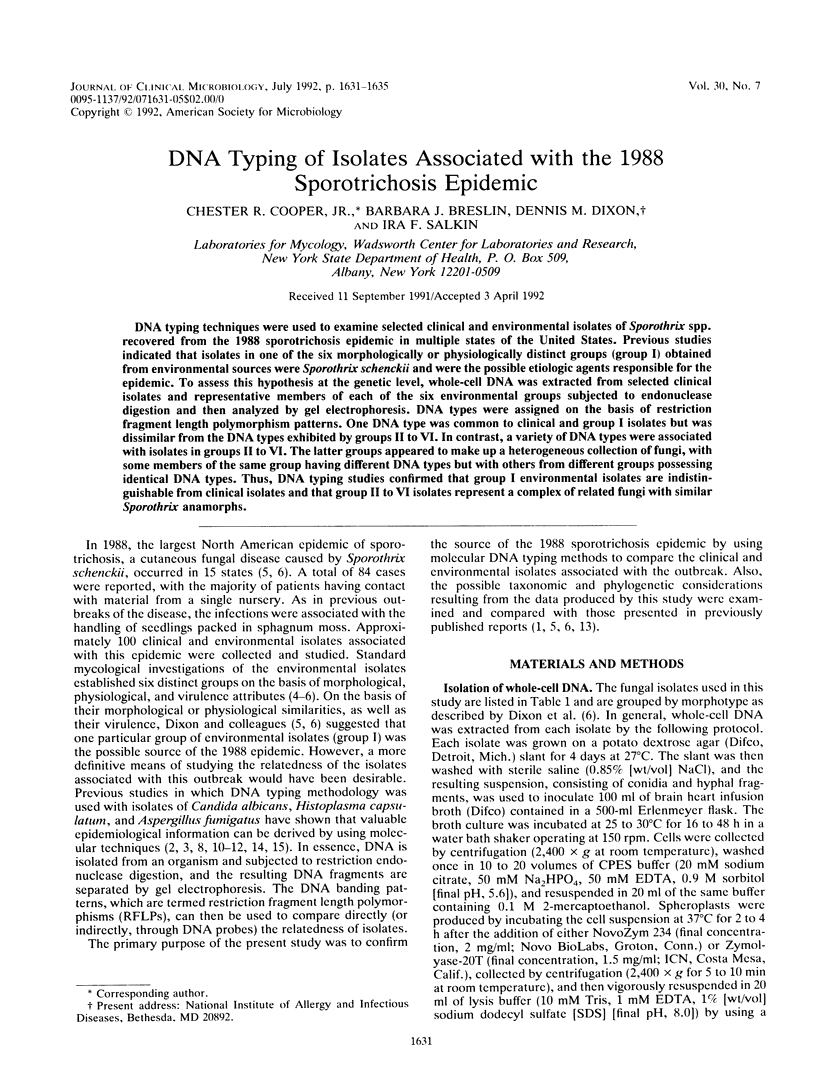
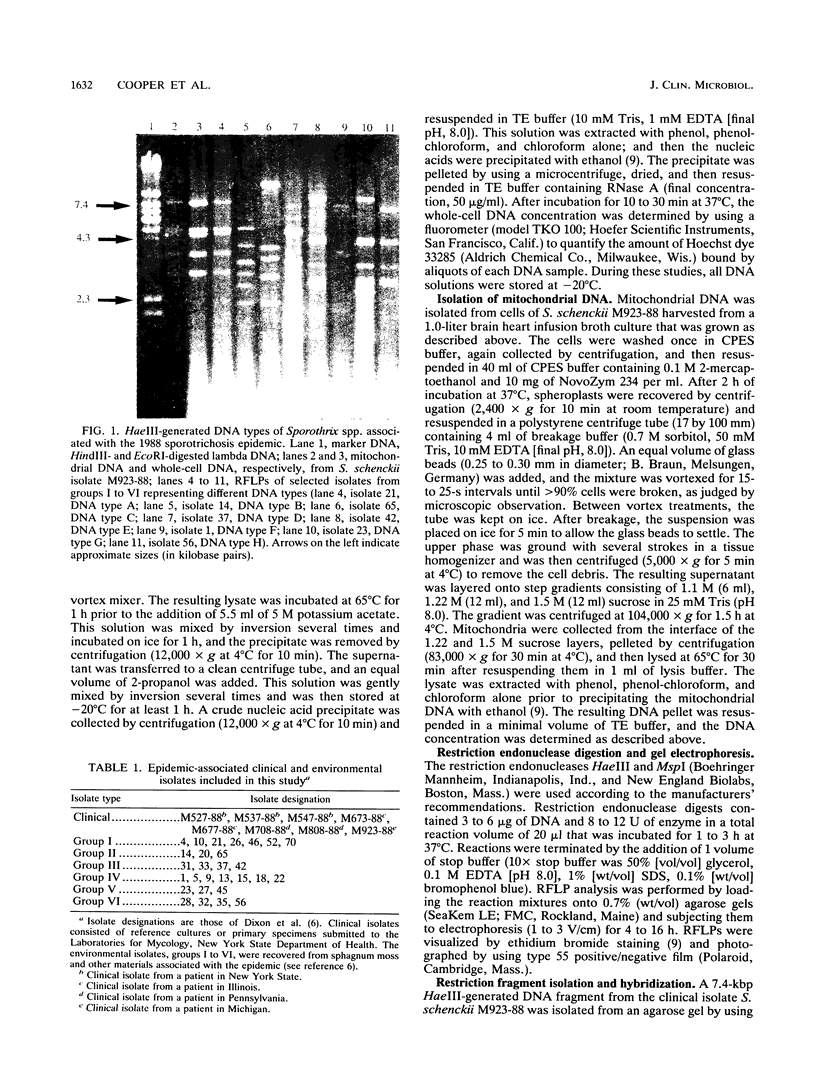
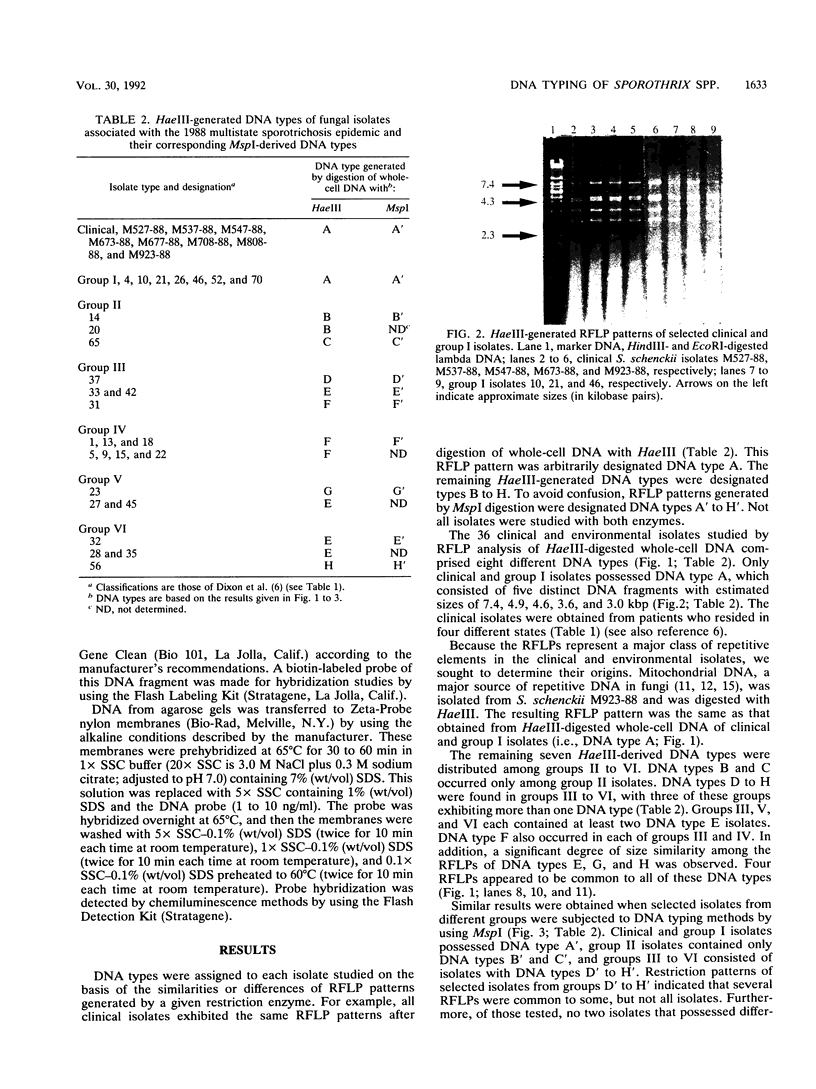
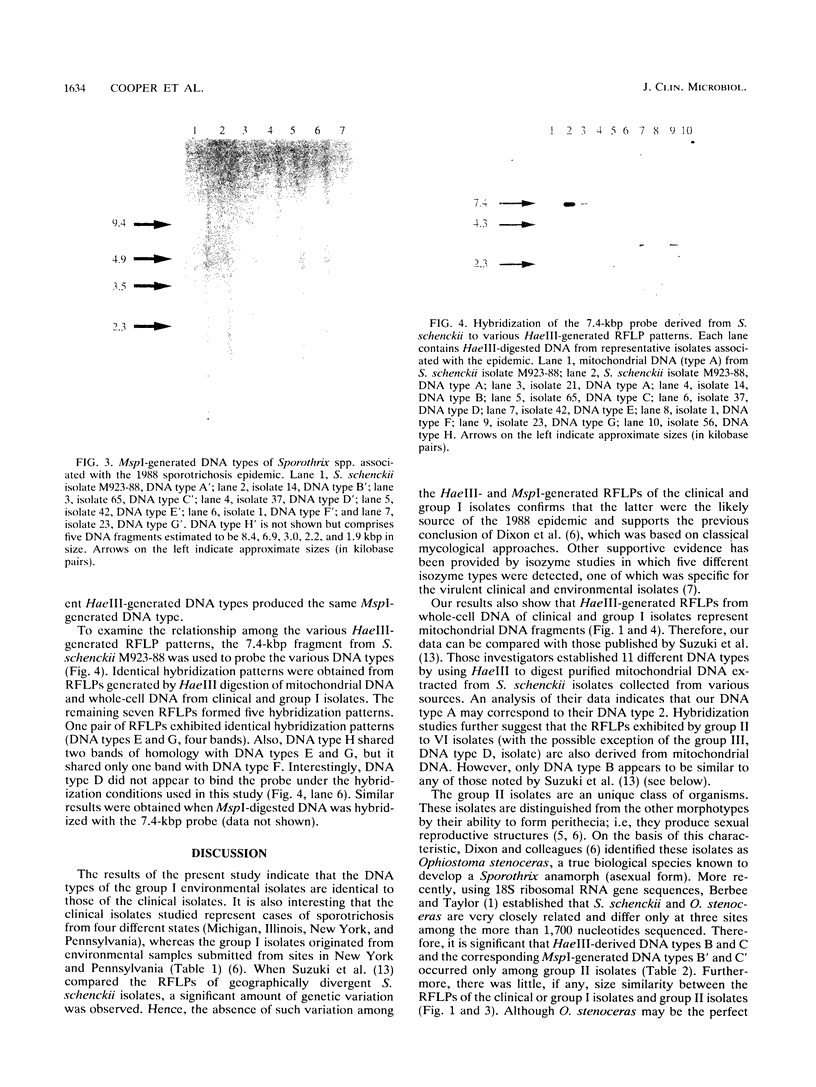
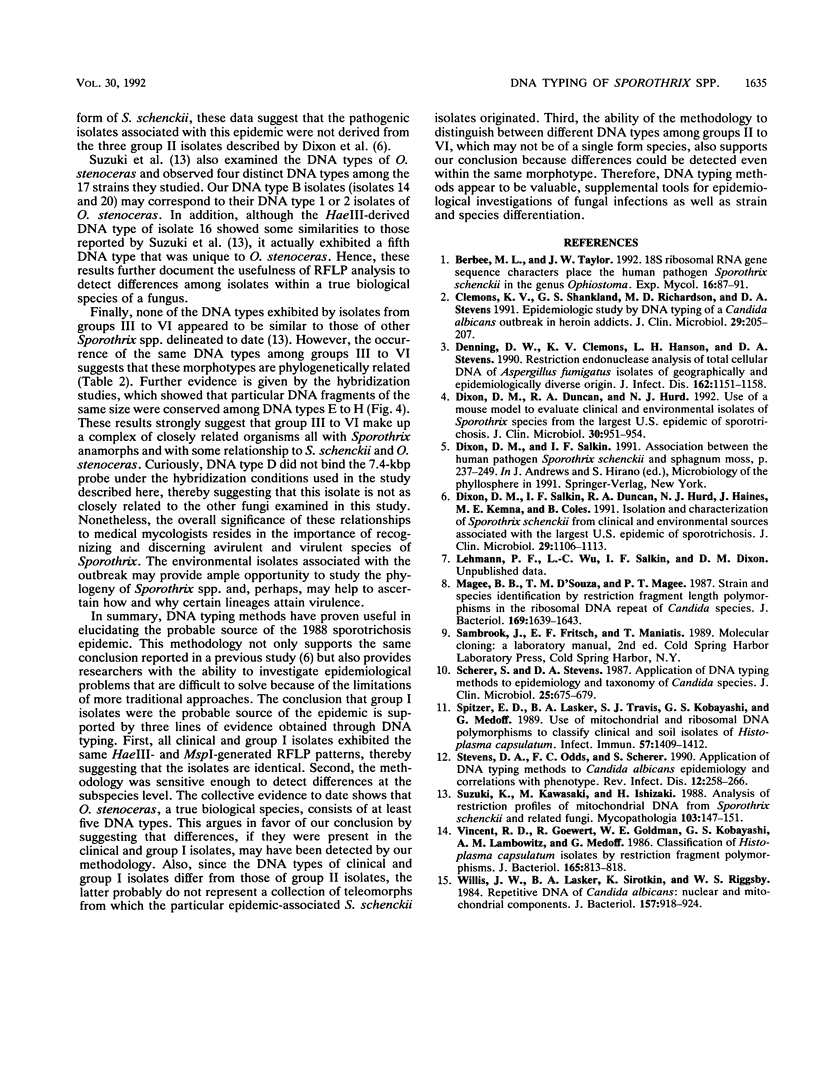
Images in this article
Selected References
These references are in PubMed. This may not be the complete list of references from this article.
- Clemons K. V., Shankland G. S., Richardson M. D., Stevens D. A. Epidemiologic study by DNA typing of a Candida albicans outbreak in heroin addicts. J Clin Microbiol. 1991 Jan;29(1):205–207. doi: 10.1128/jcm.29.1.205-207.1991. [DOI] [PMC free article] [PubMed] [Google Scholar]
- Denning D. W., Clemons K. V., Hanson L. H., Stevens D. A. Restriction endonuclease analysis of total cellular DNA of Aspergillus fumigatus isolates of geographically and epidemiologically diverse origin. J Infect Dis. 1990 Nov;162(5):1151–1158. doi: 10.1093/infdis/162.5.1151. [DOI] [PubMed] [Google Scholar]
- Dixon D. M., Duncan R. A., Hurd N. J. Use of a mouse model to evaluate clinical and environmental isolates of Sporothrix spp. from the largest U.S. epidemic of sporotrichosis. J Clin Microbiol. 1992 Apr;30(4):951–954. doi: 10.1128/jcm.30.4.951-954.1992. [DOI] [PMC free article] [PubMed] [Google Scholar]
- Dixon D. M., Salkin I. F., Duncan R. A., Hurd N. J., Haines J. H., Kemna M. E., Coles F. B. Isolation and characterization of Sporothrix schenckii from clinical and environmental sources associated with the largest U.S. epidemic of sporotrichosis. J Clin Microbiol. 1991 Jun;29(6):1106–1113. doi: 10.1128/jcm.29.6.1106-1113.1991. [DOI] [PMC free article] [PubMed] [Google Scholar]
- Magee B. B., D'Souza T. M., Magee P. T. Strain and species identification by restriction fragment length polymorphisms in the ribosomal DNA repeat of Candida species. J Bacteriol. 1987 Apr;169(4):1639–1643. doi: 10.1128/jb.169.4.1639-1643.1987. [DOI] [PMC free article] [PubMed] [Google Scholar]
- Scherer S., Stevens D. A. Application of DNA typing methods to epidemiology and taxonomy of Candida species. J Clin Microbiol. 1987 Apr;25(4):675–679. doi: 10.1128/jcm.25.4.675-679.1987. [DOI] [PMC free article] [PubMed] [Google Scholar]
- Spitzer E. D., Lasker B. A., Travis S. J., Kobayashi G. S., Medoff G. Use of mitochondrial and ribosomal DNA polymorphisms to classify clinical and soil isolates of Histoplasma capsulatum. Infect Immun. 1989 May;57(5):1409–1412. doi: 10.1128/iai.57.5.1409-1412.1989. [DOI] [PMC free article] [PubMed] [Google Scholar]
- Stevens D. A., Odds F. C., Scherer S. Application of DNA typing methods to Candida albicans epidemiology and correlations with phenotype. Rev Infect Dis. 1990 Mar-Apr;12(2):258–266. doi: 10.1093/clinids/12.2.258. [DOI] [PubMed] [Google Scholar]
- Suzuki K., Kawasaki M., Ishizaki H. Analysis of restriction profiles of mitochondrial DNA from Sporothrix schenckii and related fungi. Mycopathologia. 1988 Sep;103(3):147–151. doi: 10.1007/BF00436813. [DOI] [PubMed] [Google Scholar]
- Vincent R. D., Goewert R., Goldman W. E., Kobayashi G. S., Lambowitz A. M., Medoff G. Classification of Histoplasma capsulatum isolates by restriction fragment polymorphisms. J Bacteriol. 1986 Mar;165(3):813–818. doi: 10.1128/jb.165.3.813-818.1986. [DOI] [PMC free article] [PubMed] [Google Scholar]
- Wills J. W., Lasker B. A., Sirotkin K., Riggsby W. S. Repetitive DNA of Candida albicans: nuclear and mitochondrial components. J Bacteriol. 1984 Mar;157(3):918–924. doi: 10.1128/jb.157.3.918-924.1984. [DOI] [PMC free article] [PubMed] [Google Scholar]






